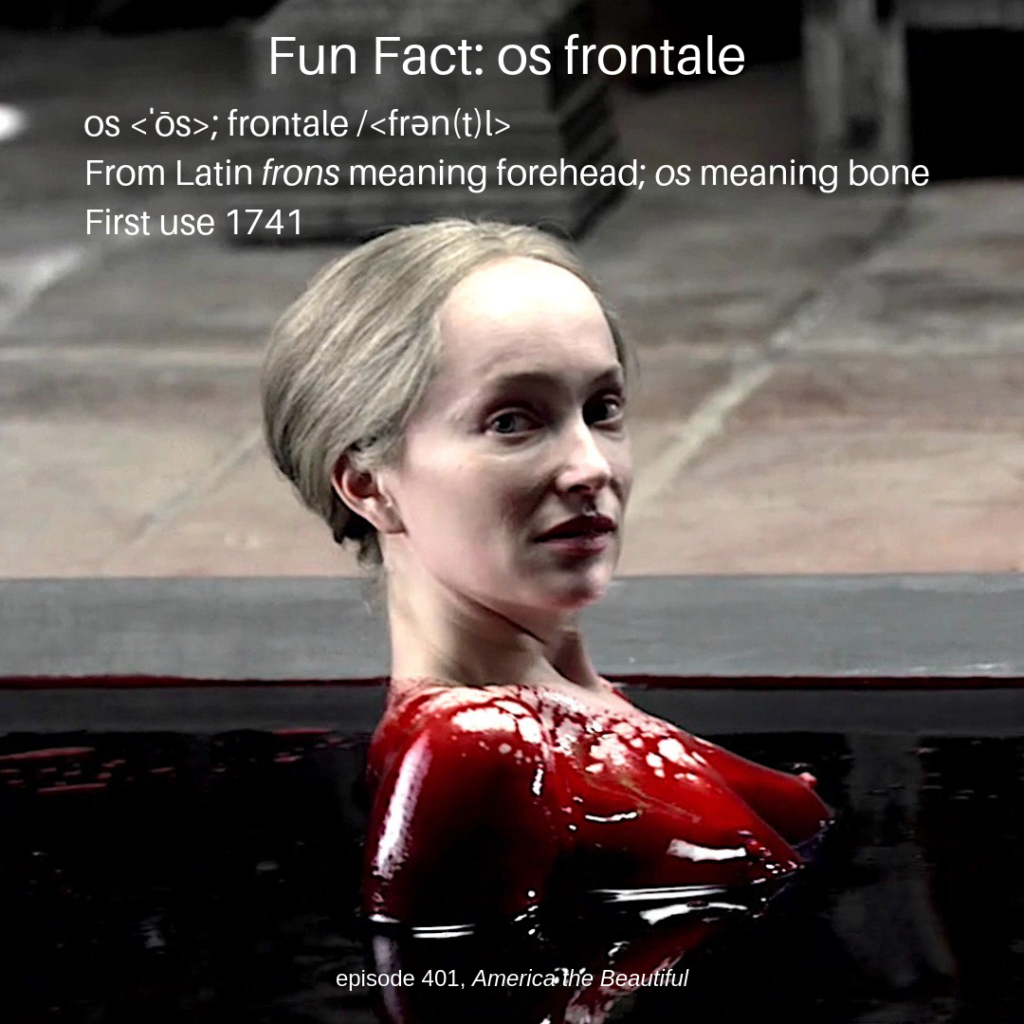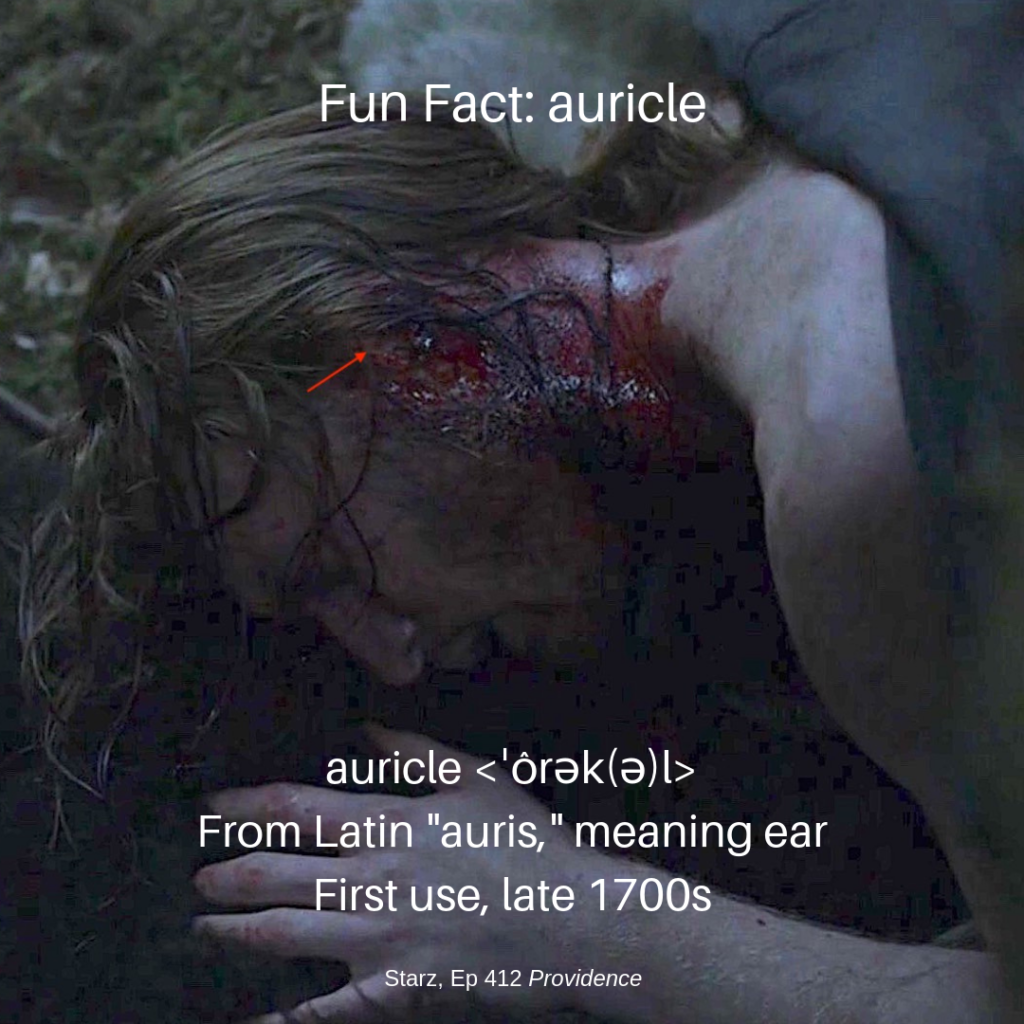Welcome to Anatomy Lesson #63, The Measles, or as Herr Mueller would say, the “measle.” This topic is timely as measles has raised its ugly head in recent outbreaks around the world. As usual, this lesson combines Outlander book quotes, TV series images and science. I hope you find it interesting and useful!
Outlander episode 405, Savages, begins with a sweet harlequin doll removed from a shelf and wrapped in a checkered cloth. Gerhart Mueller and son Tommy are in Cross Creek, purchasing a gift for an expected grandchild. Remember the doll as we will return to it later in the lesson.
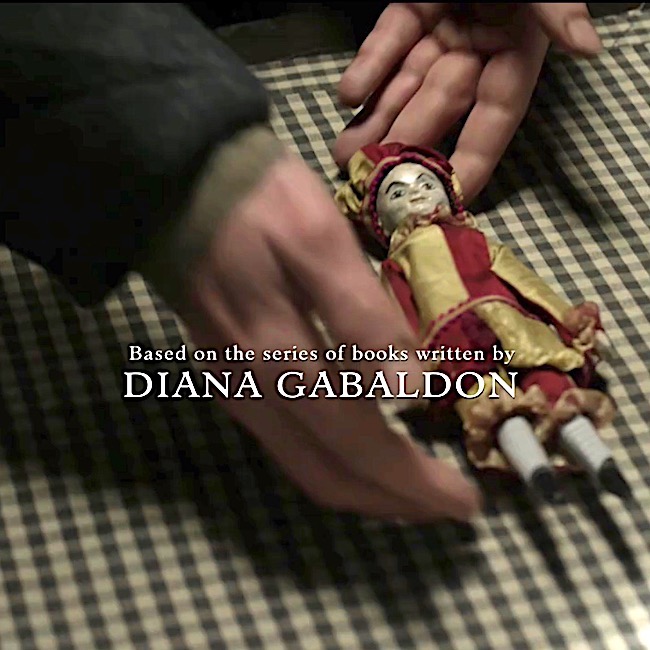
Meanwhile, at the Mueller cabin near Fraser’s Ridge, Dr. Claire has delivered a new baby girl, Klara. Grandmother, Rosewitha, and widowed mother, Petronella softly croon:
Thy Mother shakes the little trees,
There Falls down one little dream.
Sleep, baby, sleep!
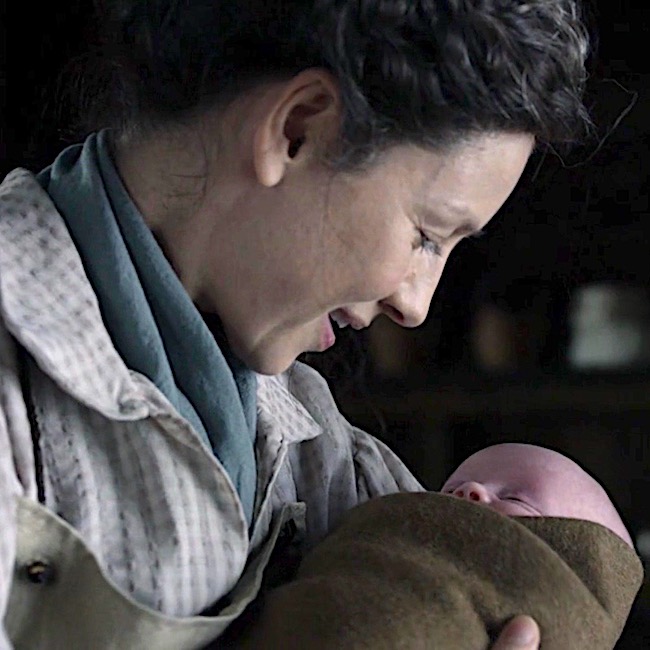
As always, Outlander books provide for our lessons, this time, measles. <G>
Days after delivery, Pastor Gottfried appears at Fraser’s cabin with terrible news. In Drums of Autumn book, Lord John Grey is already a guest at Fraser’s cabin, has measles and serves as interpreter:
“Do you know a family named Mueller?”
“Yes,” I said, immediate alarm flaring at the name. “I delivered a child to Petronella Mueller, three weeks ago.”
“Ah.” Grey licked dry lips and glanced at the ground; he didn’t want to tell me.
“The—the child is dead, I am afraid. So is the mother.”
“Oh, no.” I sank down on the bench by the door, swept by a feeling of absolute denial. “No. They can’t be.”
“He says it was Masern; I think that would be what we call the measle.”

Slightly different sequence, but in Starz episode 406, Blood of My Blood, Lord John and son William arrive on Jamie’s doorstep for an unexpected visit. Surprise!
Claire is less than happy but tables those insecurities after Lord John falls ill. She hastily summons her best doctoring skills for her imagined rival.
- Did you pass through Cross Creek on your journey? Yes, he did.
- Open your mouth. He does.
- Feels his jawline. Ow, that is tender.
- Palpates his neck. Yep, swollen lymph nodes.
- Orders Jamie to take his biological son, William, on a prolonged camping trip.
Buh bye, boys!
 Open, says me!
Open, says me!
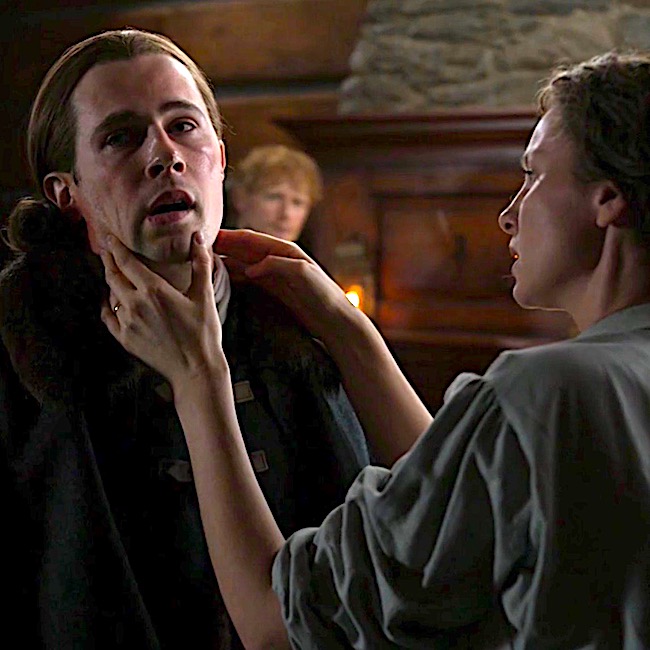
Swollen lymph nodes in the neck!
Jamie is instructed to whisk William away because Claire has correctly deduced that LJG has contracted measles and is highly contagious!
Her diagnosis is correct and soon she is caring for a very ill, Lord John.
- fever ✔︎
- dry cough ✔︎
- red, watery eyes ✔︎
- headache ✔︎
- rash ✔︎
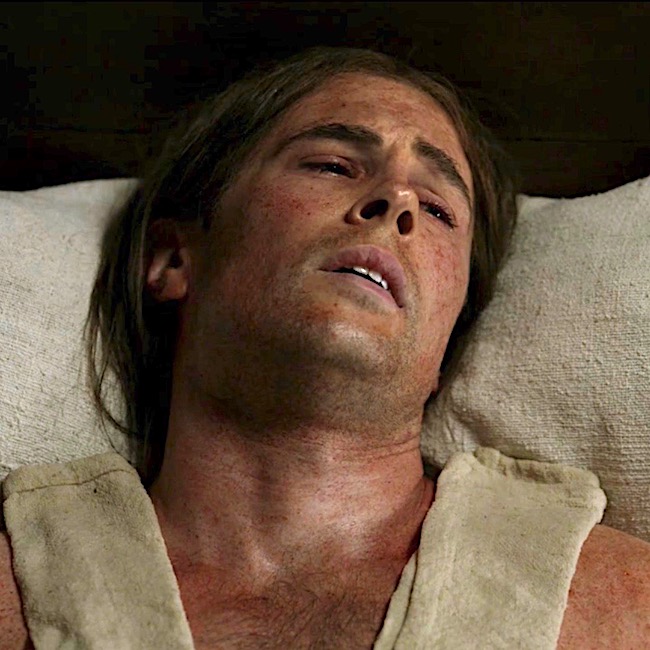 Fever
Fever
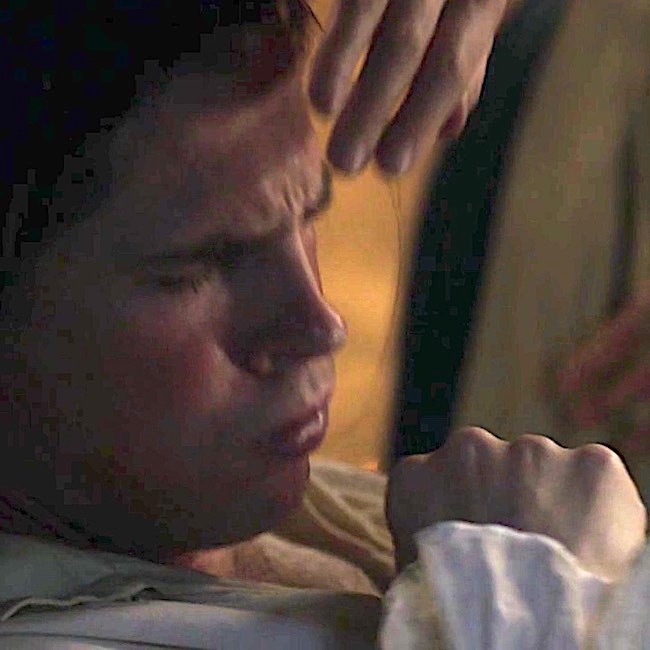 Cough
Cough
 Blood-shot eyes
Blood-shot eyes
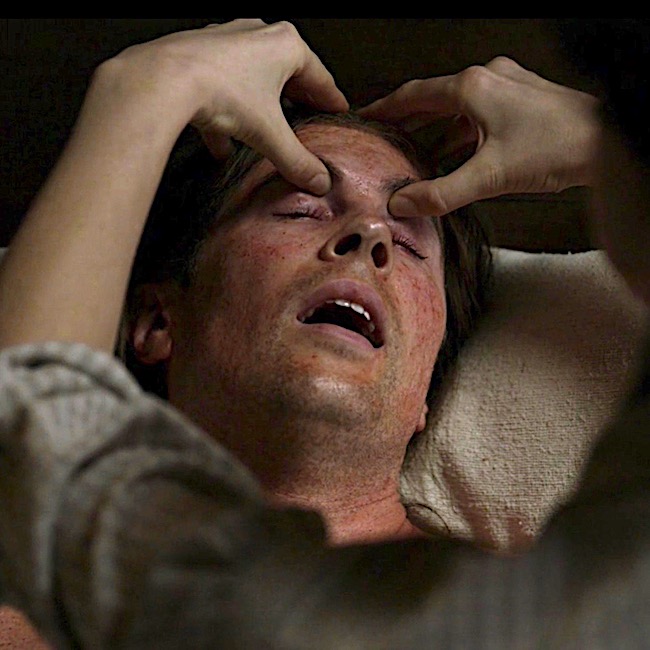 Headache
Headache
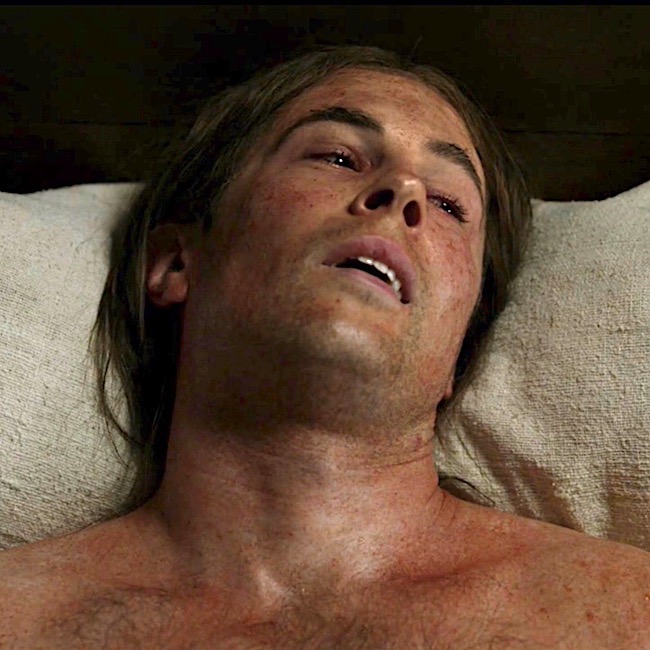 Rash
Rash
All of this nursing causes Claire to muse (Drums of Autumn):
Nursing is hard work, and all of a sudden I was bloody tired of it.
Nevertheless, Claire honorably attends to Lord John throughout the course of the disease. As he leaves Fraser’s Ridge with Willie, she admonishes him to get plenty of rest and to eat squash, carrots and liver. He rewards her with a look of amused disbelief. Whaaat? Why? Read on.

OK, that is a quick review of the two episodes. Now for the science. Yay!
Cause: Measles is a disease of humans (no known animal reservoir) caused by the measles virus. Measles is also known as morbilii, rubeola, English measles or red measles. Sometimes, measles is confused with rubella, the German measles, or with roseola, but these are different diseases caused by different viruses. What’s with all the R’s???
The measle virus is a tiny innocuous-looking entity belonging to the Paramyxovirus family. Image A shows an electron micrograph of a measles virus. Understand, the colors are not natural, these are computer-generated.
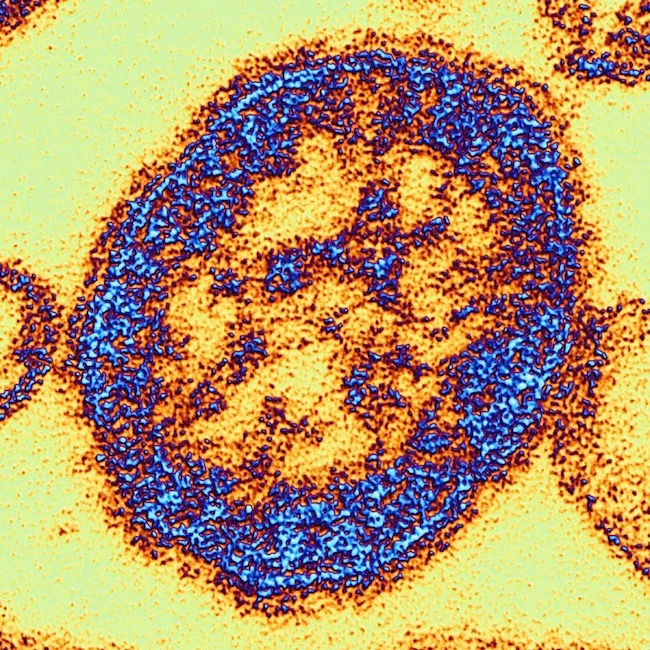
Image A
Exposure: Measles is a highly contagious disease contracted by contact with an infected person. Virus particles become airborne in droplets from coughs and sneezes or via contact with saliva or nasal secretions. The next victim breathes in the droplets or touches the secretions then unwittingly transfers to nose or mouth.
Measles is so infectious, 90% of people who share the same living space (and are not immune) will become infected! (psst…not sure how Willie escapes the measles after sharing a bed with his father at Fraser’s cabin, but he does)
Once inside a new host, the measles virus binds to and infects cells lining the respiratory tract. The virus hijacks these cells to make new viruses which then seed lungs, blood stream and other sites such as GI tract and brain.
Symptoms: Symptoms typically last 7-10 days and appear in two phases:
- Phase 1: symptoms appear 7–14 days after exposure. Lord John exhibits all but the runny nose! Sniff.
- high fever > 40 °C/104.0 °F
- dry cough
- swollen lymph nodes (usually)
- inflamed conjunctivae of eyes
- runny nose
- Phase 2: symptoms appear 2-5 days after phase 1. Lord John exhibits both.
- Koplik’s spots (2-3 days after phase 1)
- flat, red rash (3-5 days after phase 1)
A few comments about the last two symptoms.
Koplik Spots: Koplik’s spots are small white bumps scattered on the oral lining opposite 1st and 2nd molars (Image B). These are pathognomonic (specific) for measles. They may also appear on the roof of mouth, explaining why Claire peers directly into Lord John’s oral cavity in ep 406 (see image above).
In Drums of Autumn, Herself includes Koplik spots in Claire’s diagnosis:
I wrung out a cloth wetted with elderflower water, and wiped Grey’s face and neck. There was no rash yet on his face, but when I made him open his mouth, the small whitish Koplik’s spots on the lining were clear enough. “Yes, you have got the measles,” I said. “How long have you been feeling ill?”
Note: In the episode, this symptom is wrongly timed because Claire sees Koplik spots early on. However, these spots don’t appear until 2-3 days after phase 1 symptoms. Because of the latency, they are often missed by practitioner or parent. But, no biggie. Say, ahhhhh!
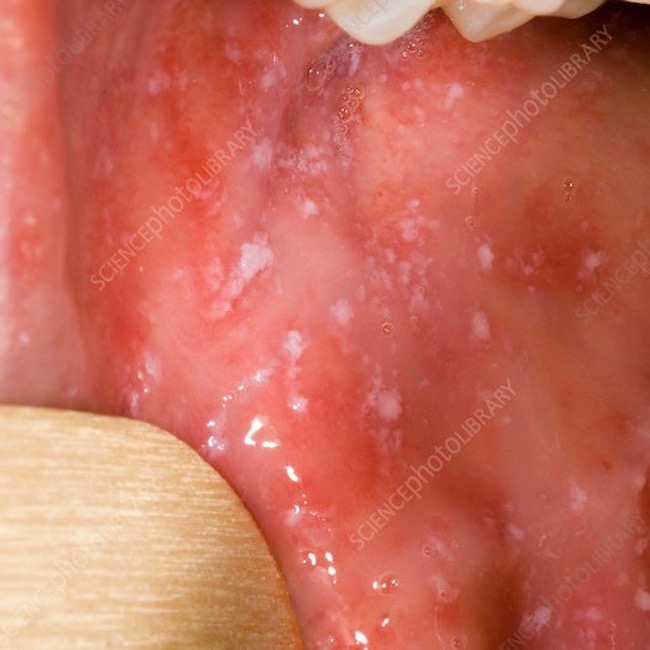
Image B
Rash: 3-5 days after phase 1 symptoms, a flat, red rash appears on the face and then spreads to the rest of the body. Understand that victims are infective for at least four days before and four days after the rash – not just during the rash. Ergo, we must hope that Jamie and Willie spent at least 8-10 days foraging in the woods!
Image C is an archival photo of the typical measles rash. This puir little lad is covered with measles rash and feels poorly.
After Care: Generally, after care is the same for other communicable diseases: rest, hydration, etc. However, Claire admonished Lord John about his diet, remember? Here’s why.
Vitamin A therapy is recommended to reduce the risk of blindness from the measles, although it neither prevents nor cures the disease. Liver (yuk!), squash and carrots are high in Vitamin A or Provitamin A which is why Claire recommends them to Lord John. However, Vitamin A is only present in animal-sourced foods, such as liver. Provitamin A is high in squash and carrots but our genetics determine whether we can convert this compound into usable Vitamin A. Some can and some cannot, so supplements may be employed. Complicated!
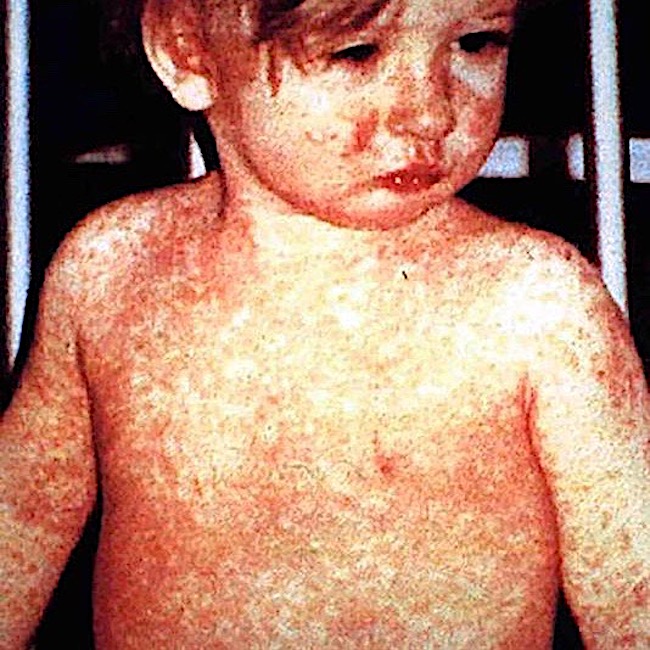 Image C
Image C
Fomites: Fomites are inanimate objects or materials that transmit disease. After ep 405 aired, some fans blamed the doll for carrying measles to the Mueller household. Nope. The measles virus can survive on inanimate surfaces for a maximum of 2 hours. Cross Creek is miles from Fraser territory, so the chance the virus survived on the surface of the doll is basically, zero.
I pointed this out to a FaceBook group which was hell-bent on blaming the doll for infecting the Mueller family. One fan responded that Outlander was a fantasy so, if she wanted the doll to be the carrier, then it could be. I agree with her, Outlander is fiction … but, measles is not!
The most likely source is Tommy Mueller. Why? Because both his parents had contracted measles years before and have lasting immunity (with few exceptions). Tommy was probably exposed in Cross Creek and unwittingly brought the virus to Petronella and baby Klara. Remember, a person is infectious some four days before the rash appears. Make sense? Yay!
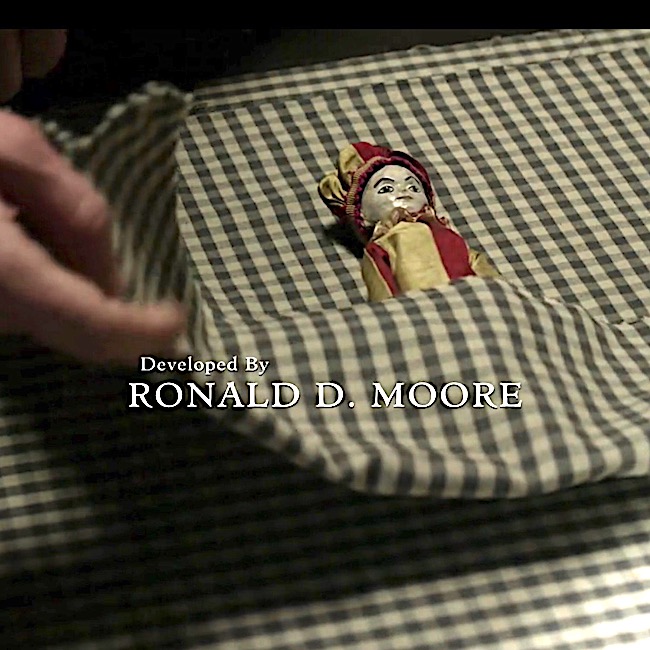
Measles Complications: Just so you know, in addition to typical symptoms noted above, measles may cause more serious problems, including:
- diarrhea
- middle ear infection
- pneumonia
- seizures
- blindness
- inflammation of the brain (encephalitis)
- death
Passive Immunity: Mothers who are immune to the measles virus pass antibodies against the virus to their offspring while still in the womb. Such antibodies usually confer newborn infants some immunity against measles, but these antibodies are gradually lost over the course of the first nine months of life.
Which brings us to the topic of vaccines!
Vaccination: This is a loaded topic, but must be addressed. Please don’t run away, anatomy students!
For 150 years, between 1855 and 2005, measles likely killed about 200 million people, worldwide. Vaccination saw a 75% decrease in deaths from measles between 2000 and 2013 alone, with about 85% of children worldwide being currently vaccinated
In 1968, Maurice Hilleman, a US microbiologist, developed an effective vaccination against measles, part of the MMR regime still administered today (Image D). A moment to honor this prolific scientist who developed 40 vaccines of which 8 are still currently used. Thank you, Maurice!
In the Pacific Northwest, where I live, 76 new cases of measles have been verified in the first two months of 2019, most occurring among unvaccinated children under the age of 10.
Although a different disease, an Oregon child recently contracted tetanus, the first case in over 30 years! His hospital stay (at my university) was 57 days, cost almost $1,000,000 and required 100 nurses and doctors for his care. They turned for advice to other parts of the world because none had ever seen the disease!
Have you guessed? The boy was unvaccinated. And, amazingly, his parents refused to vaccinate him even after his ordeal (tetanus does not confer lasting immunity to its victims). Let us not forget that the poor child was extremely ill with involuntary contractions of his spinal muscles and other issues.
One reason my area of the US has been hit hard by measles is Washington and Oregon allow parents to opt out of vaccines based on undefined personal beliefs. The outbreak is causing a review of this policy perhaps to allow minors to make their own decisions about vaccination or to end non-medical exemptions all together (New Scientist, 23 Feb., 2019).
Why are folks shunning vaccinations for their children? Well, some are afraid to do something they may regret. Some believe vaccines are the way a nefarious government could do harm. Some don’t want to line the pockets of big Pharm (less than 2% of their earnings coming from vaccines). Still others believe the disproved theory that vaccines cause autism.

Image D
Herd immunity: Understand that in order to prevent an outbreak, a certain percent of the population must be immunized. This is known as herd immunity. For measles, this is 90% of people. Remember, there are always members of any community, such as the immunosuppressed, who cannot receive vaccinations. Thus, it is crucial that healthy members of a community be vaccinated.
If you are unsure about vaccines, perhaps this TEDX talk will help. At the very least, it might give you food for thought.
All in all, ignorance serves humankind rather poorly, in my view.
Gerhart is a perfect example: the man thought measles was a curse brought on by savages so he exacted his revenge upon their healer, Adawehi (Nayawenne). Here from Drums of Autumn:
“They are dead,” he said. “Mein Mädchen. Mein Kind.” Tears welled suddenly in the bloodshot eyes, and ran slowly down the weather-beaten grooves of his face. The misery in his eyes was so acute that I reached out and took his huge, work-scarred old hand in mine.
…Her name meant. “It may be; it will happen.” Now it had, and all that was left me for consolation was her words: “She says you must not be troubled; sickness is sent from the gods. It won’t be your fault.”

Conclusion: Measles is a dreadful, highly contagious disease which has significance for individuals, their families and greater communities. It is not a new disease. For perspective, consider its description by the Persian physician Rhazes in the 10th century – he deemed measles “more to be dreaded than smallpox.”
OK, enough about heaviness. On a happier note, let’s close this lesson with serious kudos to the makeup artist (Ann McEwan?) who created Lord John Grey’s “measles.” The special effects were terrific and convincing. Armed with spray and sponge, she managed to produce a red rash typical for measles!
BTW, the application was done on David Berry’s birthday so he had birthday cake and rash. Brash!
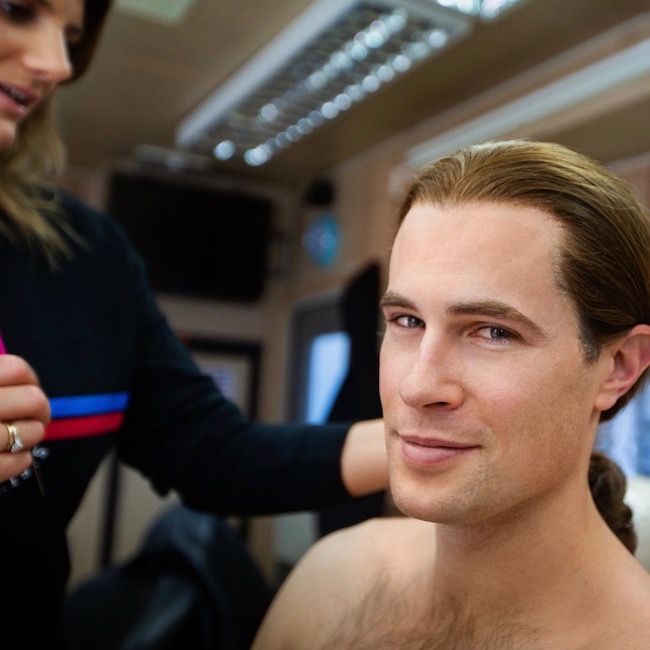
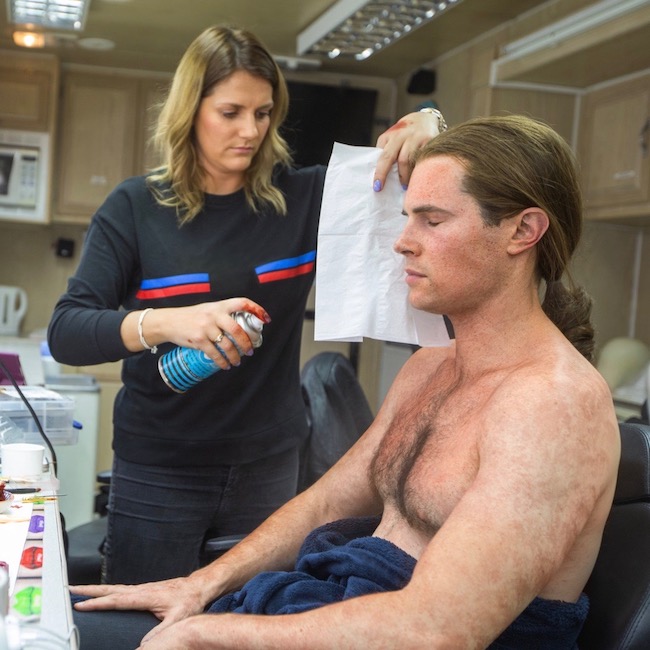


Lord John, you be a handsome dude, measles or no!!!
A deeply grateful,
Outlander Anatomist
Photo Credits: Starz, Image A www.pixels.com; Image B www.sciencephoto.com; Image C www.freep.com; Image D www.nlm.nih.gov

